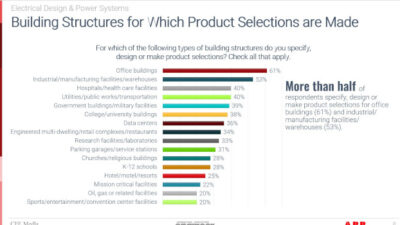Blockchain offers a change to the construction industry over paper and old shared database systems with a new way to make trusted transactions between autonomously provided services and information sources.
The construction industry is ripe for disruption, greater transparency in supply chains is much needed, paperwork is still predominant, and as building components increasingly become ‘intelligent’ there is a need for a secure digital ledger for sensors, owners and operators. I believe blockchains, if implemented correctly, could improve construction’s transparency and efficiency in a number of ways.
First, a definition. A blockchain is a decentralised, tamper-proof digital ledger of transactions. The world’s first encounter with Blockchain Technology was in 2009 with the launch of Bitcoin, a digital peer-to-peer cash system. Bitcoin’s blockchain, among other ingredients, is the answer to a problem computer scientists had been trying to solve for years: how to create a digital asset that cannot be copied. It allows two or more parties to transfer monetary or any other representation of value, share information and run automated ‘smart’ contracts in a way that does not rely on a trusted third party like a bank, a notary or any private company as a trusted middleman.
The ability to create, validate, authenticate and audit contracts and agreements in real-time, across borders, without third-party intervention, makes Blockchain Technology appealing to many professional services organisations. Many global financial and legal institutions are exploring and discussing the potential impacts and opportunities of Blockchain Technology in their businesses. The security gains and cost savings for the financial, legal and technology sectors are obvious. Design, engineering and construction need to now examine the benefits of this technology.
From blockchain to supply-chain
The decentralised, permissionless and censorship resistant approach of Blockchain Technology opens up completely new ways to track the flow of materials, contracts and payments in supply chains. Knowing in real-time which materials have arrived at a construction site, who handled them and where they originate from, makes a blockchain potentially valuable to the operation of a circular economy.
The complex data-sets that designers and engineers produce in Building Information Modelling (BIM) software are increasingly useful to a building’s ongoing operation, and Blockchain Technology has a potential key role to play here too. This could include smart self-executing contracts between the owner, operator and component or system suppliers involved. A blockchain could also be used to verify who added which components to the digital model.
The Internet of Things requires a ledger of things. For as more and more things become interconnected, be it in transportation, infrastructure, energy, waste or water, a trusted system will be needed for transactions between these autonomously provided services and information sources. A decentralized, industry wide blockchain could play a central role here.
It is important to not just look into blockchain because everybody does but rather try and understand the fundamental change a well implemented, open and immutable blockchain offers the industry over paper and decade old shared database systems.
Matthias Geipel has been part of the management consulting team at Arup in Germany since 2010. This article originated from Arup’s blog. Arup is CFE Media’s content partner. Edited by Carly Marchal, content consultant, CFE Media.



